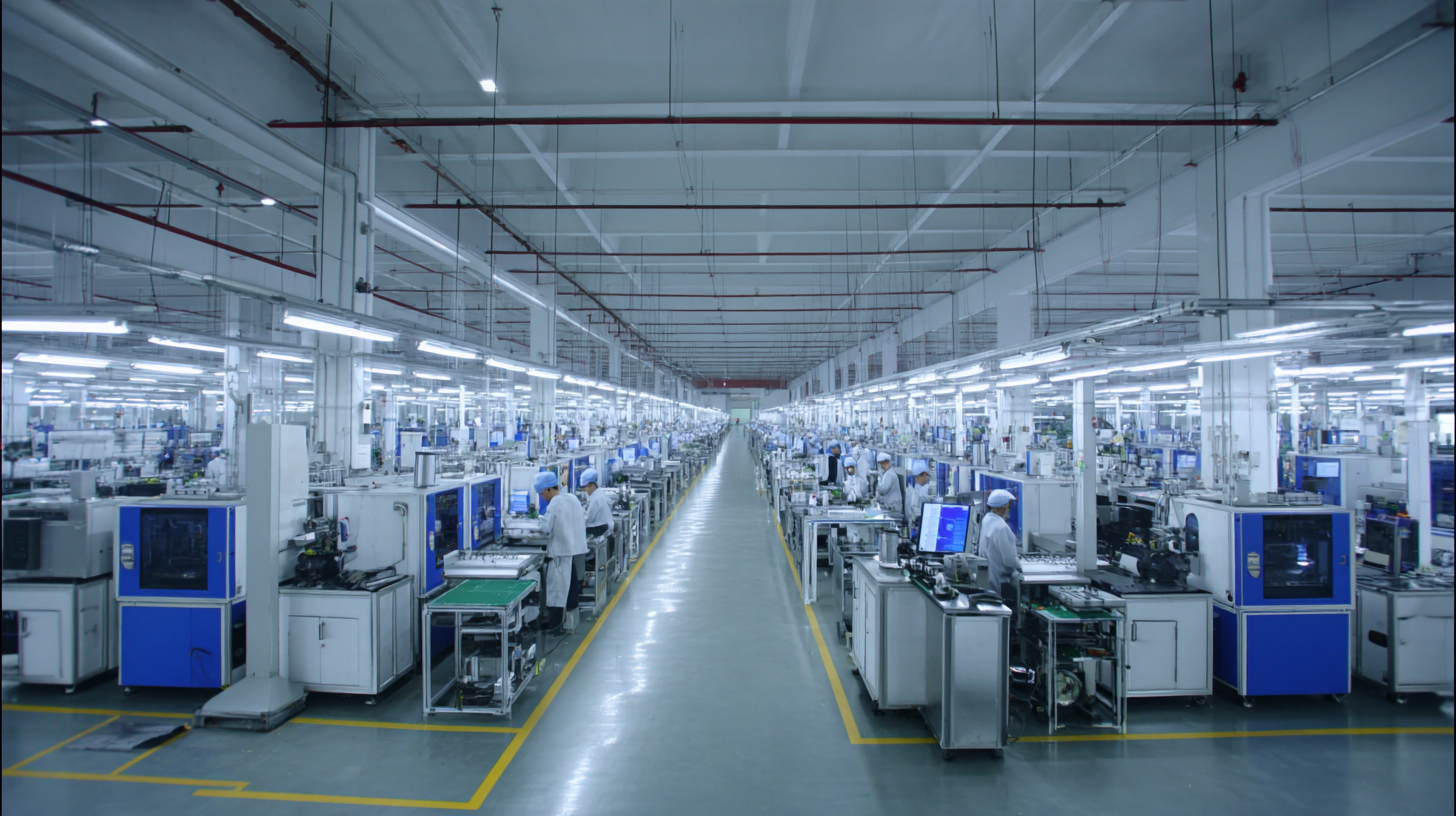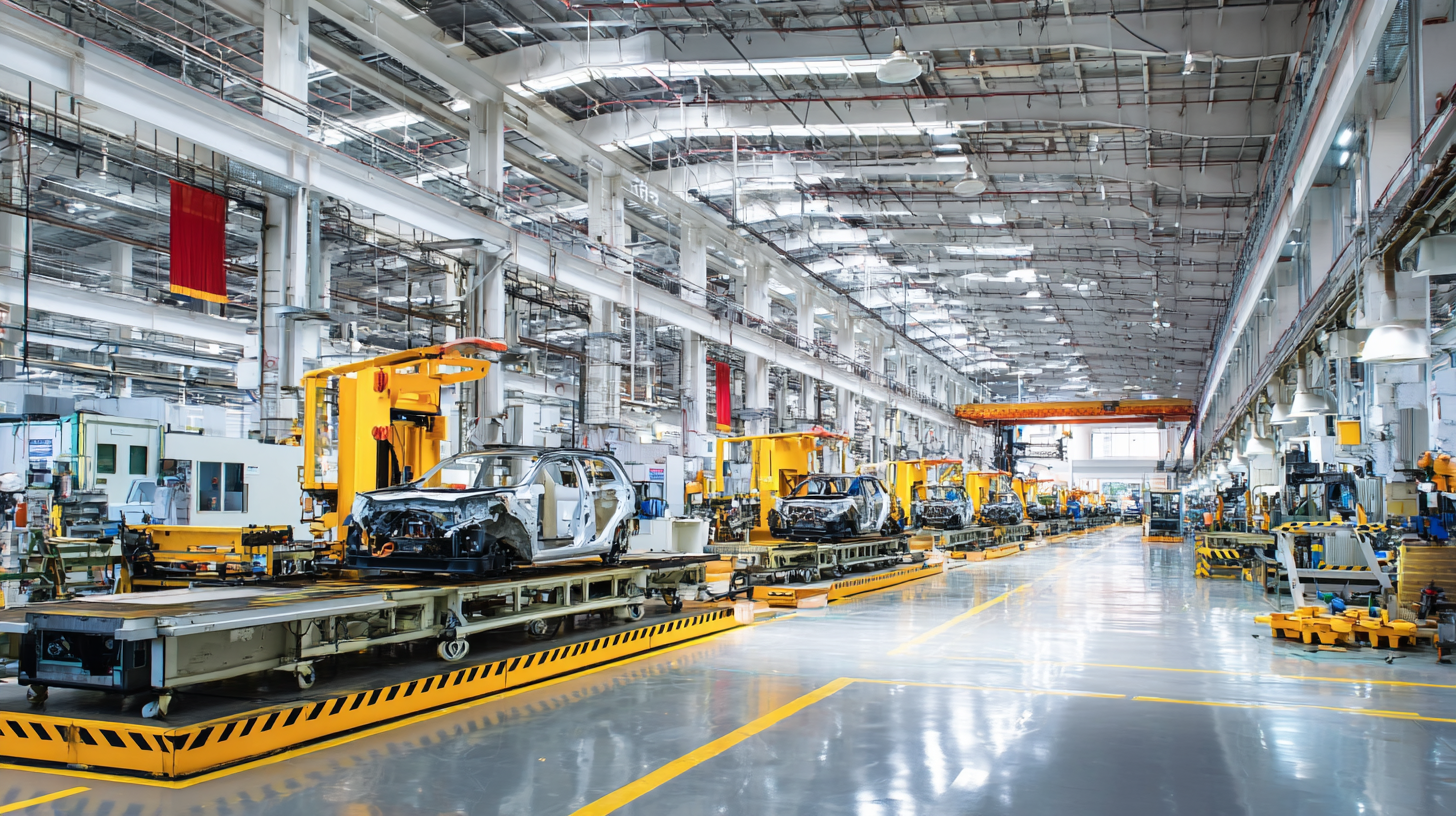
Unveiling the Excellence of Top-Quality Manufacturing Factories in China
China has established itself as the world's manufacturing powerhouse, contributing over 28% to the global manufacturing output, according to a report by the United Nations Industrial Development Organization.
 The rise of top-quality manufacturing factories in China has positioned the country as a critical player in various industries, from electronics to textiles. This is largely due to the combination of advanced technology, skilled labor, and a robust supply chain ecosystem.
As businesses seek to optimize production while maintaining high standards of quality, understanding the benefits of engaging with these factories becomes essential.
This blog will delve into the numerous advantages of collaborating with top-quality manufacturing facilities in China, exploring how they can enhance efficiency, reduce costs, and drive innovation, ultimately benefiting businesses across the globe.
The rise of top-quality manufacturing factories in China has positioned the country as a critical player in various industries, from electronics to textiles. This is largely due to the combination of advanced technology, skilled labor, and a robust supply chain ecosystem.
As businesses seek to optimize production while maintaining high standards of quality, understanding the benefits of engaging with these factories becomes essential.
This blog will delve into the numerous advantages of collaborating with top-quality manufacturing facilities in China, exploring how they can enhance efficiency, reduce costs, and drive innovation, ultimately benefiting businesses across the globe.
The Impact of China’s Manufacturing Sector on Global Supply Chains: A Numeric Overview
China's manufacturing sector plays a crucial role in global supply chains, significantly impacting economic dynamics worldwide. According to industry reports, the global supply chain management market is projected to grow from $26.25 billion in 2024 to $63.77 billion by 2032, reflecting a robust compound annual growth rate (CAGR) of 11.7%. This growth underscores the importance of adaptability and resilience in manufacturing processes, especially as we navigate the complexities of the "customization era."

The recent advancements showcased at events like the second China International Supply Chain Promotion Expo highlight China's commitment to optimizing its manufacturing capabilities. With a focused approach on "co-win chains," manufacturers are encouraged to collaborate and innovate, thus enhancing overall efficiency and safety. As stresses on supply chains continue, industries must prioritize stability to ensure seamless operations.
Tip: Companies should invest in technologies that improve supply chain visibility and flexibility, enabling quicker responses to disruptions.
Tip: Cultivating strong relationships with suppliers can lead to more resilient supply chains, allowing for co-creation and innovation that meets evolving market demands.
Top-Quality Manufacturing Facilities: Key Characteristics and Industry Standards
In today's global economy, top-quality manufacturing facilities in China stand out for their ability to meet stringent industry standards. These factories often incorporate advanced technologies and rigorous quality control processes, ensuring that every product not only meets client specifications but also exceeds customer expectations. Key characteristics of these facilities include automation, skilled labor, and adherence to international certifications like ISO 9001, which guarantee consistent quality and reliability.
When assessing a manufacturing factory, consider these essential tips: First, investigate the factory’s certifications and compliance with industry standards, as this reflects their commitment to quality. Second, evaluate their production capabilities—facilities that utilize modern equipment and processes are typically more efficient and capable of producing higher quality products. Lastly, look into their quality assurance practices; a factory with a robust quality management system is more likely to deliver consistent results.
Moreover, the work culture at these factories plays a crucial role. Facilities that prioritize worker training and safety not only enhance production efficiency but also foster a positive environment that drives innovation and excellence in manufacturing. Such attributes make top-quality manufacturing factories in China a vital player in the global supply chain.
Unveiling the Excellence of Top-Quality Manufacturing Factories in China
Statistical Insights into China’s Manufacturing Output: A Deep Dive into the Numbers
China has long been recognized as a global manufacturing powerhouse, and recent statistical insights further affirm this status. In 2022, China's manufacturing output reached an astonishing $4.45 trillion, making up nearly 28% of the world’s total manufacturing value. This impressive figure highlights not only the scale of production but also the diverse range of industries thriving within the country, from electronics to textiles, and machinery to consumer goods.
Delving deeper into the numbers, China’s manufacturing sector has been driven by technological advancements and efficient supply chain logistics. According to recent reports, over 50% of China’s manufacturing firms have integrated advanced automation and artificial intelligence into their processes. This shift not only enhances productivity but also raises the quality of goods produced. As a result, many Chinese factories are not merely cost-effective; they are becoming leaders in innovation, setting benchmarks for quality that resonate across the international market.
Why Quality Control is Critical: Analyzing Defect Rates in Chinese Factories
In today's rapidly evolving manufacturing landscape, quality control has emerged as a critical focus, particularly in Chinese factories, where high defect rates can significantly impact competitiveness. As manufacturers strive to meet increasing demands for personalized products and embrace digitalization, the integration of Industrial Internet of Things (IIoT) technologies has become essential. These technologies facilitate real-time monitoring and data collection, allowing for more precise quality control processes and ultimately leading to reduced defect rates.

The advent of Lighthouse Factories in China exemplifies this shift towards intelligent manufacturing. By adopting cutting-edge technologies such as artificial intelligence and big data analytics, these factories not only enhance their production efficiency but also improve product quality. AI-powered visual inspection systems are revolutionizing defect classification, helping manufacturers implement closed-loop quality management systems. This not only ensures a seamless quality feedback mechanism but also contributes to the overarching goal of achieving zero defects in manufacturing. In this competitive environment, the continuous enhancement of quality control practices via advanced technologies will be key to maintaining excellence in production and meeting the demands of the future market.
The Future of Manufacturing in China: Trends and Predictions Supported by Data
The manufacturing landscape in China is undergoing transformative changes, driven by advancements in predictive analytics and the Internet of Things (IoT). According to industry analysis, the predictive analytics market is projected to reach significant growth, reflecting a rising emphasis on data-driven decision-making within manufacturing sectors. Notably, as of 2023, IoT connections in China are forecasted to expand due to the increasing integration of smart technologies within various industries, further enhancing operational efficiency.
In 2024, several key trends are expected to define the manufacturing sector, despite challenges like labor shortages and supply chain disruptions. Manufacturers are focusing on automation and digital transformation, leading to the adoption of cloud and on-premise deployments for their predictive analytics needs. Reports suggest that large enterprises are particularly inclined to leverage these technologies to optimize processes and improve productivity.
**Tips:** Embrace predictive analytics to make informed decisions based on historical data trends. Investing in IoT infrastructure not only enhances connectivity but also paves the way for smarter manufacturing operations. Additionally, staying updated on market forecasts can help businesses adapt strategies effectively in a rapidly evolving landscape.